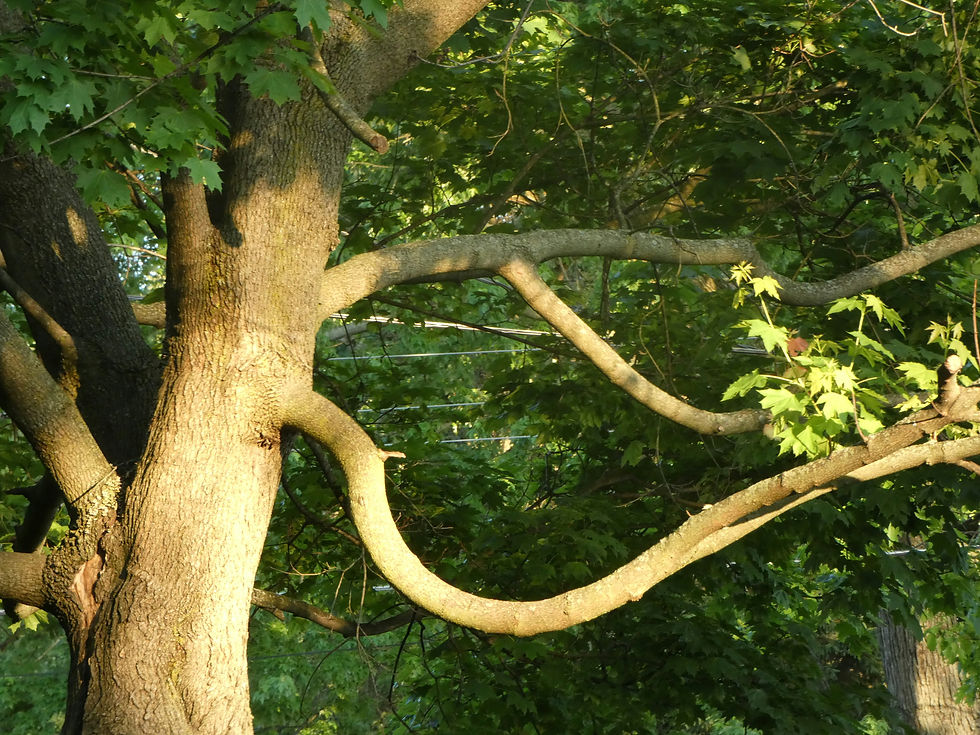Top 10 Tree Risks Every Homeowner Should Know
- Timber Bros

- Jul 29
- 3 min read
Updated: Jul 29

Trees are one of the most beautiful features of any property, but when they become unsafe, they can quickly go from assets to liabilities. As a homeowner, understanding the common risks trees pose can help you prevent costly damage and keep your property safe year-round.
Here are the top 10 tree risks every homeowner should be aware of:

1. Dead or Dying Branches
Dead limbs are brittle, weak, and highly susceptible to breaking, especially during storms or strong winds.
What to watch for:
• Branches with no leaves during the growing season
• Cracks in large limbs
• Fungus growing on bark
Why it matters
Falling limbs can cause injury or damage to roofs, vehicles, fences, or power lines.

2. Leaning Trees
While some trees naturally grow at an angle, a sudden or increasing lean can indicate instability in the roots or trunk.
What to watch for:
• Soil mounding or roots lifting on the opposite side of the lean
• Fresh cracks in the soil near the base
• Leaning after a storm
Why it matters
A leaning tree could be on the verge of falling, especially if the ground is wet or the root system is compromised.

3. Cracks or Splits in the Trunk
Visible cracks in the bark or trunk can mean internal decay or structural weakness.
What to watch for:
• Deep vertical splits
• Cracks around branch attachments
• Bark falling off
Why it matters
A cracked trunk is more likely to fail in high winds or heavy snow.

4. Root Damage
Roots are the foundation of a tree’s stability. Damage—whether from construction, compacted soil, or disease—weakens the tree’s ability to stay upright and healthy.
What to watch for:
• Fungal growth around the base
• Exposed or severed roots
• Poor drainage or standing water
Why it matters
A damaged root system is one of the most common causes of full tree failure.

5. Overhanging or Encroaching Branches
Branches that reach over your home, driveway, or neighboring property can pose serious risks.
What to watch for:
• Branches close to or touching power lines
• Limbs growing over your roof
• Trees that block emergency access
Why it matters
These branches are more likely to fall and cause costly damage during storms or heavy snowfall.

6. Insect Infestations
Certain insects—like emerald ash borer or carpenter ants—can destroy the internal structure of your tree.
What to watch for:
• Sawdust piles near the base
• Holes in the bark
• Early leaf drop or discoloration
Why it matters
An infested tree can become structurally unsound or spread pests to other trees on your property.

7. Fungal and Bacterial Infections
Diseases can rot trees from the inside out, compromising their strength and health.
What to watch for:
• Mushrooms growing at the base
• Oozing wounds or discolored bark
• Wilting or unusual leaf patterns
Why it matters
A diseased tree is a ticking time bomb—and a threat to surrounding healthy trees.

8. Storm Damage
High winds, lightning, ice, and heavy snow can cause immediate or delayed tree failures.
What to watch for:
• Broken limbs still hanging in the canopy
• Split trunks or stripped bark
• Shifts in the tree’s position after storms
Why it matters
Damage from one storm can weaken a tree so it fails during the next.

9. Poor Pruning Practices
Improper pruning (or no pruning at all) can lead to weak branch structure or disease entry points.
What to watch for:
• Large stubs or improper cuts
• Excessive removal of the canopy
• “Topping” instead of proper crown reduction
Why it matters
Poor cuts don’t heal well, making trees more susceptible to decay and failure.

10. Trees Too Close to Structures
Trees planted too close to your home or other buildings can eventually cause foundation damage or conflict with gutters and roofs.
What to watch for:
• Roots near the foundation or pipes
• Branches touching siding or windows
• Moisture buildup on the house due to the overhanging canopy
Why it matters
Trees too close to structures can cause physical damage, pest problems, and drainage issues.
What Should You Do?
If you notice any of these signs, don’t wait. Reach out to a certified arborist—like the team at Timber Bros—to assess your tree's health and safety. Regular tree inspections and proactive maintenance can protect your home, your wallet, and your peace of mind.
Need a professional tree risk assessment?
Contact Timber Bros today, and we’ll help you identify potential hazards before they become real problems.
📞 Call Timber Bros at 517-604-9795
🌐 Visit www.timberbros.co/contact
📍 Serving all Mid-Michigan




Comments